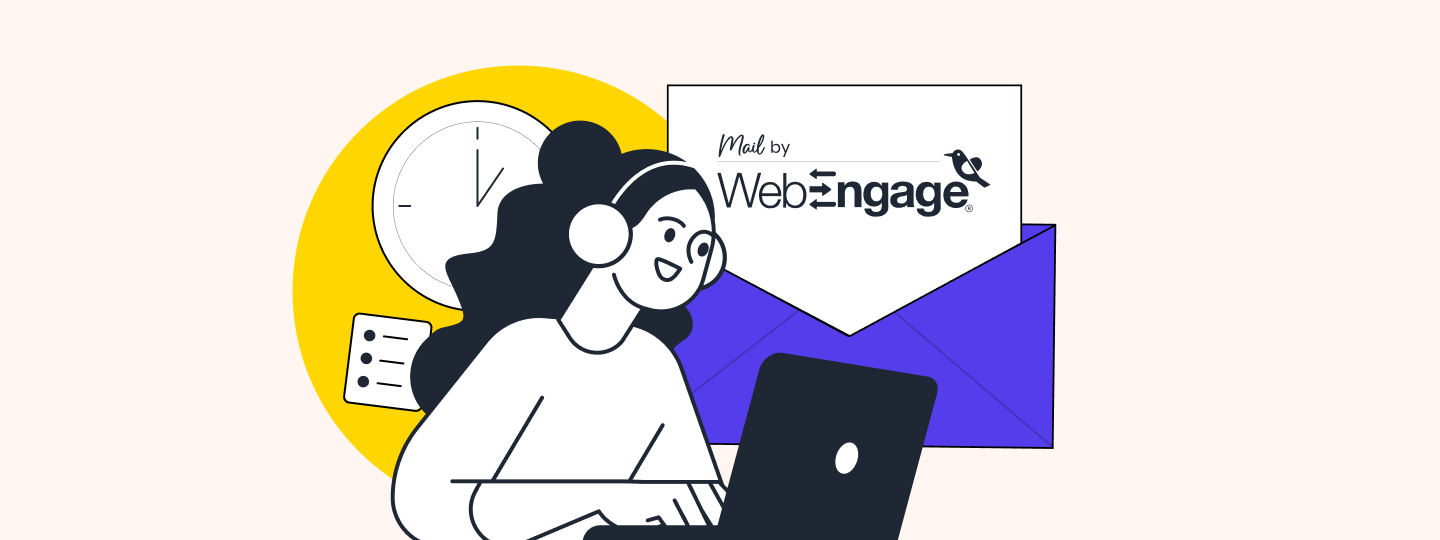Table of Contents:
1. Modern-day coupon queen
2. Millennial generation shopper
3. Mobile tech embracer
4. Single cyber male
5. Gen Z / Zillennials
6. Hipster
7. Millennial parents
8. Niche segmentation of holiday marketing campaigns
9. Benefits of segmentation of your holiday marketing campaigns
10. What’s next?
Joy to the world, Christmas is coming!
While the world is sipping hot chocolate and making a list of gifts to buy for their loved ones, Marketers like yourself are making sure that their holiday marketing campaigns are on-fleek. And this requires immense amount of prepping before they can launch the most-awaited marketing campaign of the year.
As Christmas marks the end of the year, there is something in the air which makes everyone hunky-dory. Thus, the buying behaviour of shoppers is observed to be different during November-December as compared to the rest of the year.
It’s interesting to note that Holiday Shoppers are different from the Non-Holiday Shoppers in the following ways:
- They are typically NOT shopping for themselves but for someone who belongs to a different demography;
- They are cost-conscious;
- They are fickle with low brand loyalty.
According to the recent report The Ecommerce Holiday Customer Benchmark by RJMetrics, Holiday Shoppers have 13% lower Customer Lifetime Value (CLV) and are not worth a lot. This can be proved with this break-down:
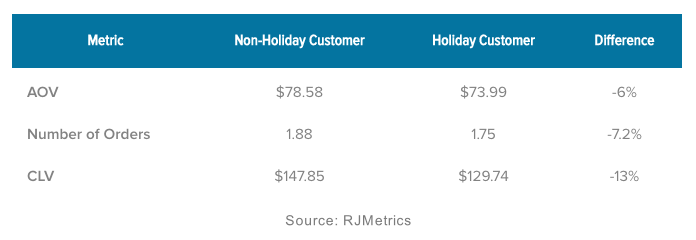
Worried much? Keep calm and continue reading.
The report also added that the holiday season observes an increase in customer acquisition by 29%-59%. Besides, Holiday Shoppers comprise of 23.7% and 19.4% of the annual revenue for holiday-sensitive (computer/electronics, apparels/accessories) and holiday-insensitive (food/drug, health/beauty, houseware/furnishing) retail categories respectively. That’s pretty incredible, don’t you think?
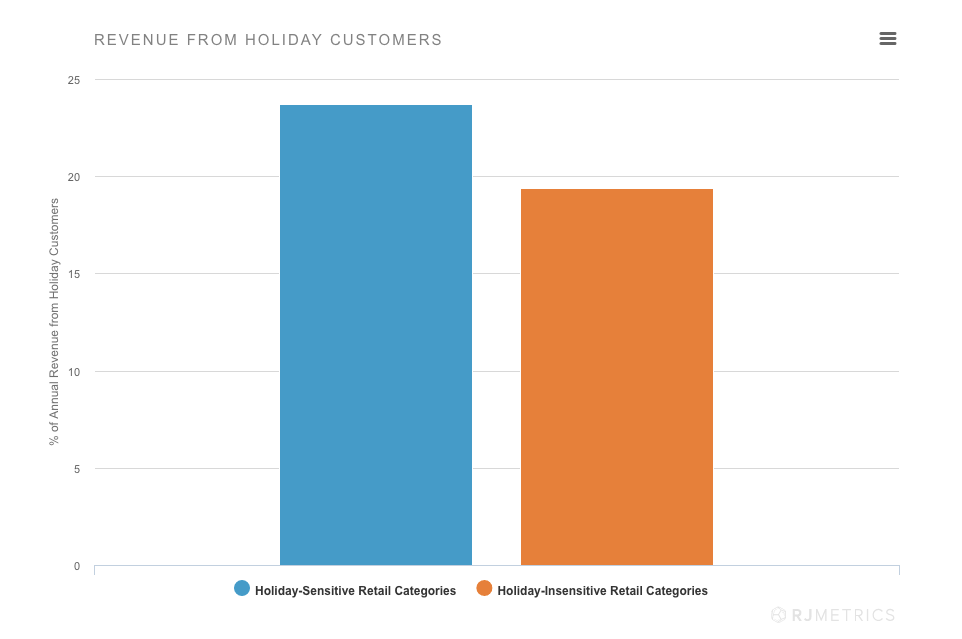
What’s more important to note is that nearly 38.7% of customers make a second purchase within the next 30 days of their first purchase. Now this gives ample of opportunities to you to remarket to segments of holiday marketing campaigns.
Bonus Read: 5 Brilliant Ways For Effective Micro-Segmentation.
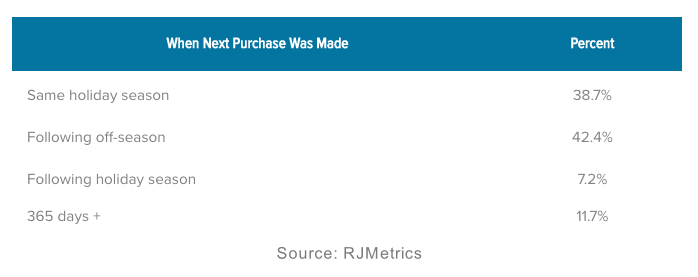
Hence, irrespective of the low CLV and even lower loyalty of Holiday Shoppers, our doe-eyed Marketers cannot help but look at them like they are Santa Claus.
But before you get started with your christmas marketing campaigns, stop and ask yourself:
“Do I really know my Holiday Shoppers?”
If you don’t then this blog will change that thing for you. Scroll down to know everything about the very-first (and extremely important!) step of launching a successful marketing campaign i.e. Micro segmentation of Holiday marketing campaigns.
Classification of holiday shoppers
In 2013, Vision Critical defined 4 types of buyer personas for Black Friday Shoppers which are as follows:
Modern-day coupon queen

- An average 43 years old Mother
- Prefers in-store shopping
- Uses mobile devices to receive online vouchers and coupons
- Reads e-newsletters to learn about promotions
- Spends the least amount of money on herself
Millennial generation shopper

- An average 26 years old Millennial
- Uses mobile devices to browse and search for products
- Shops on his/her smartphone and/or tablet
- Admits to impulse buying
Mobile tech embrace

- A mid-30s “in-store mobile shopper”
- Embraces both traditional forms of shopping and new ways of purchasing
- Prefers to shop on their mobile device along with browsing, searching, comparison shopping, etc.
Single cyber male

- An average 36 years old Bachelor
- Spends nearly as much on himself as he does on others
- Makes purchases via computers rather than on mobile devices
- Isn’t likely to bother with lines and crowds for in-store holiday promotions.
PwC, in its 2016 Holiday Outlook report, also identified 3 categories of Holiday Shoppers in the current era on the basis of their age. They are as follows:
Gen Z / Zillennials

- Born after 1996 who are falling under the age bracket of 17-20 year
- Consider shopping as a social activity as they like going to stores with friends and family
- Brand-loyal and tactile who like materialistic stuff like personal electronics, clothes, shoes, and toys
- Prefer to communicate via images rather than words using channels like Snapchat and Instagram
- Extensively use social media and mobile apps
- Prize authenticity and reviews from actual product users and influencers rather than corporate advertising
Hipster

- Recent college graduates within the age bracket of 21-30 years
- Tech-savvy and well-heeled with sufficient disposable income to spend
- Plan to spend more on a vacation than on materialistic stuff
- Inclined towards spending one-third of their holiday budget on themselves
- Prefer shopping online, often via mobile device, rather than going to a store
- Want to receive discounts, promotions, and coupons via e-mail
- Follow and sleuth out brands on social media rather than TV
Millennial parents

- Often juggling full-time jobs while caring for young children
- Start shopping earlier and indulge in in-store discounts and promotions along with comparison-shopping for best deals
- Spend less on themselves as compared to other shoppers
- Millennial Moms are avid blog readers who are more active on visual websites and rely on social media to connect with brands
- Millennial Dads are staunchly brand-loyal. They are more likely to be mobile shoppers and respond to mobile ads
- Open to using alternative delivery options such as click-and-collect, curbside pickup, and third-party-location pickup
Furthermore, Holiday buyers can further be differentiated on the basis of their shopping frequency. They are as follows:
- New user
- People who are interacting with your brand and/or retail platform for the first time
- According to Deloitte’s recent survey, 73% of respondents plan to try new retail stores or websites.
- Returning user
- People who interacted with your brand and/or retail platform last holiday season (i.e. in 2015) and are paying you a visit after a year-long of lull.
- According to RJMetrics, you can expect 7.2% of such users this year.
- Regular user
-
- People who interact with your brand throughout the year. They are your active users with high conversion rate.
- According to Deloitte’s recent survey, 76% of holiday purchases will be made at stores or through online retailers with which consumers are familiar with.
Niche segmentation of holiday marketing campaigns
Hope the above-mentioned classification of Holiday Shoppers has given you a broader idea on how to categorize customers based on attributes like age, buyer personas, purchase behavior, etc.
Once you have that in place, choose any two categories whose interlinking will create a reasonable set of customer segments for you. For instance, I’m using ‘Age’ and ‘Purchase Behaviour’ and presenting them in a tabular form to create 9 new customer segmentation models along with their basic characteristics.
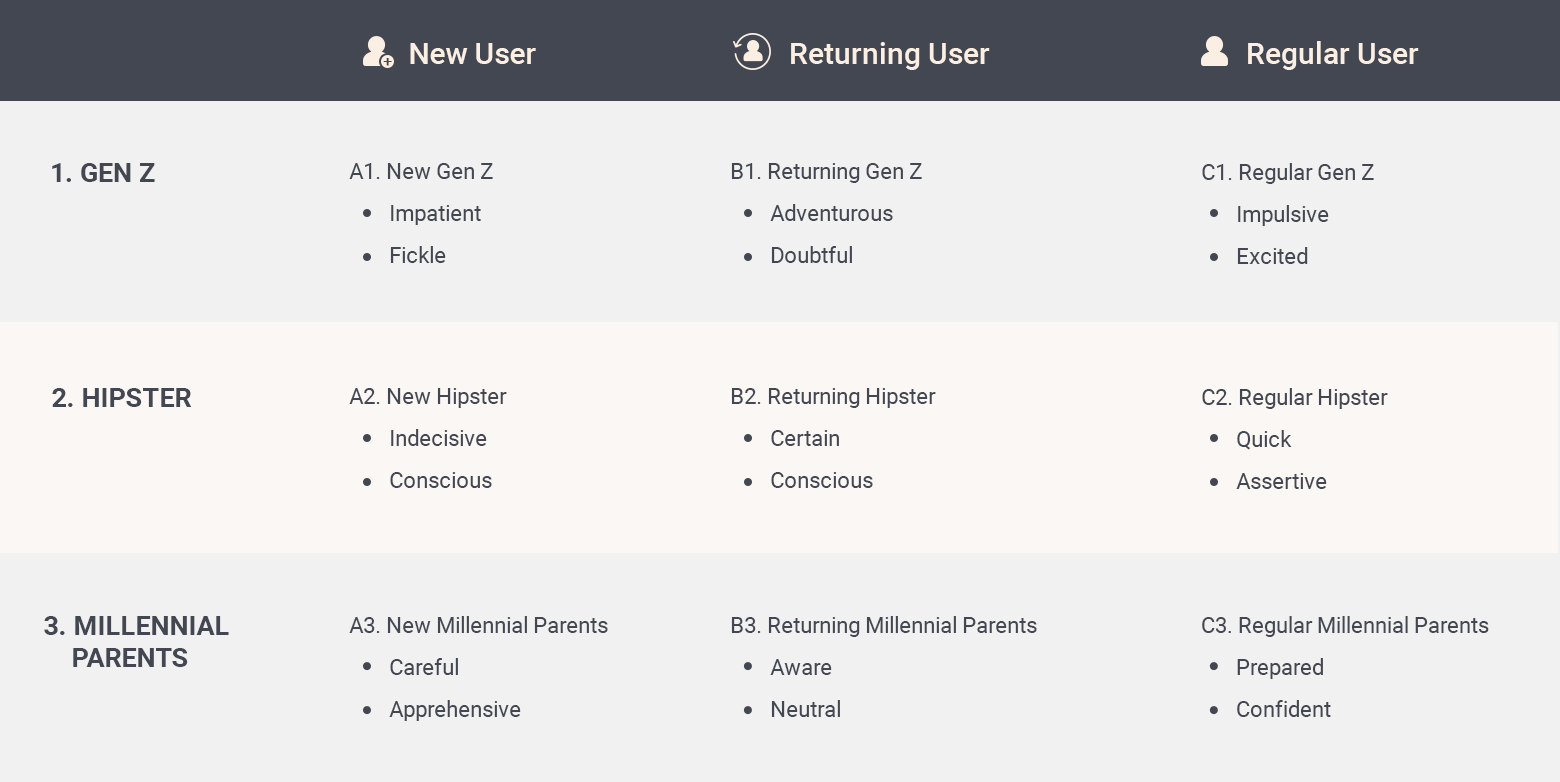
Here is the explanation for each behavioural and psychographic segment:
Now allow me to take you through the detailed Communication Strategy of each segment:
A. New users
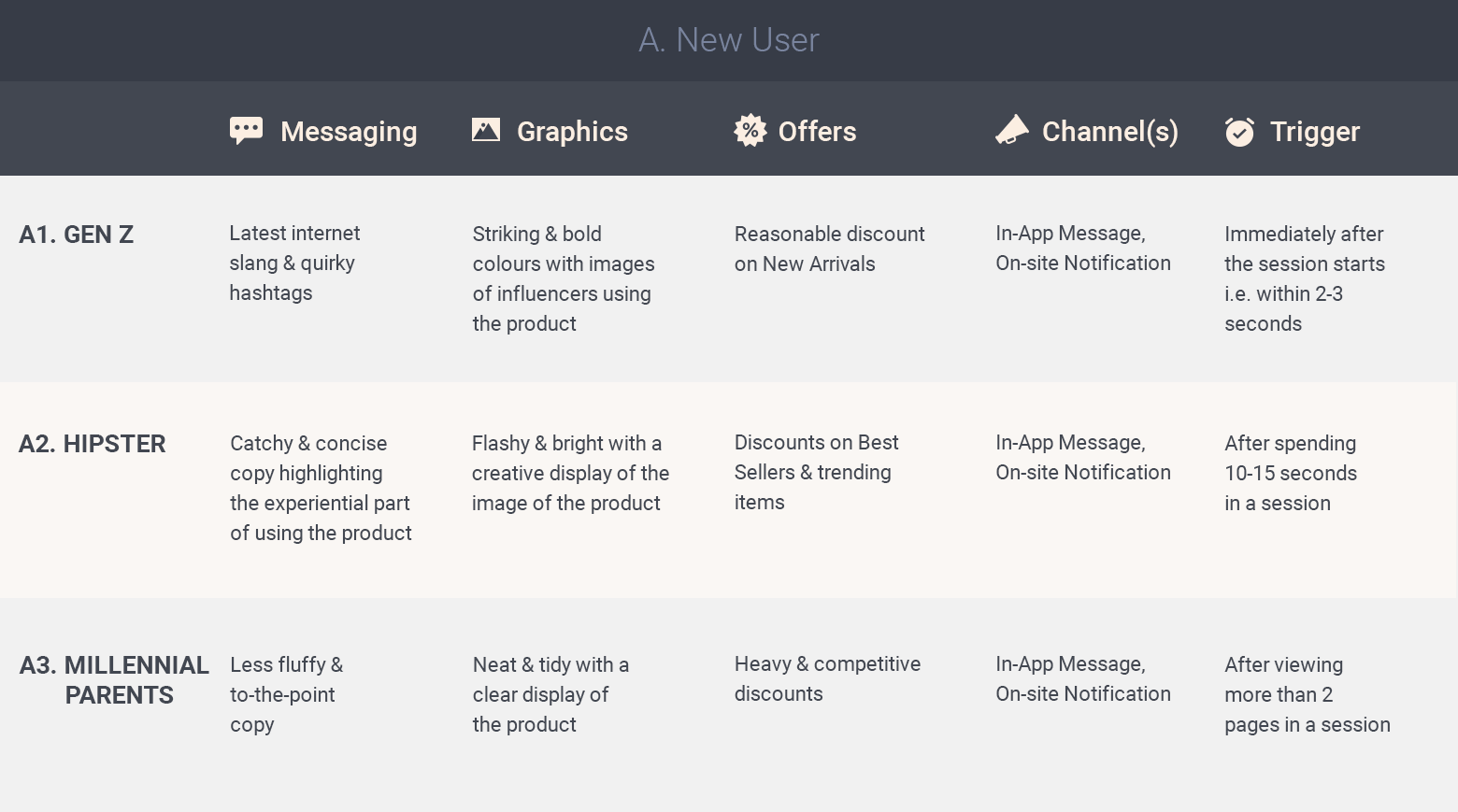
B. Returning users
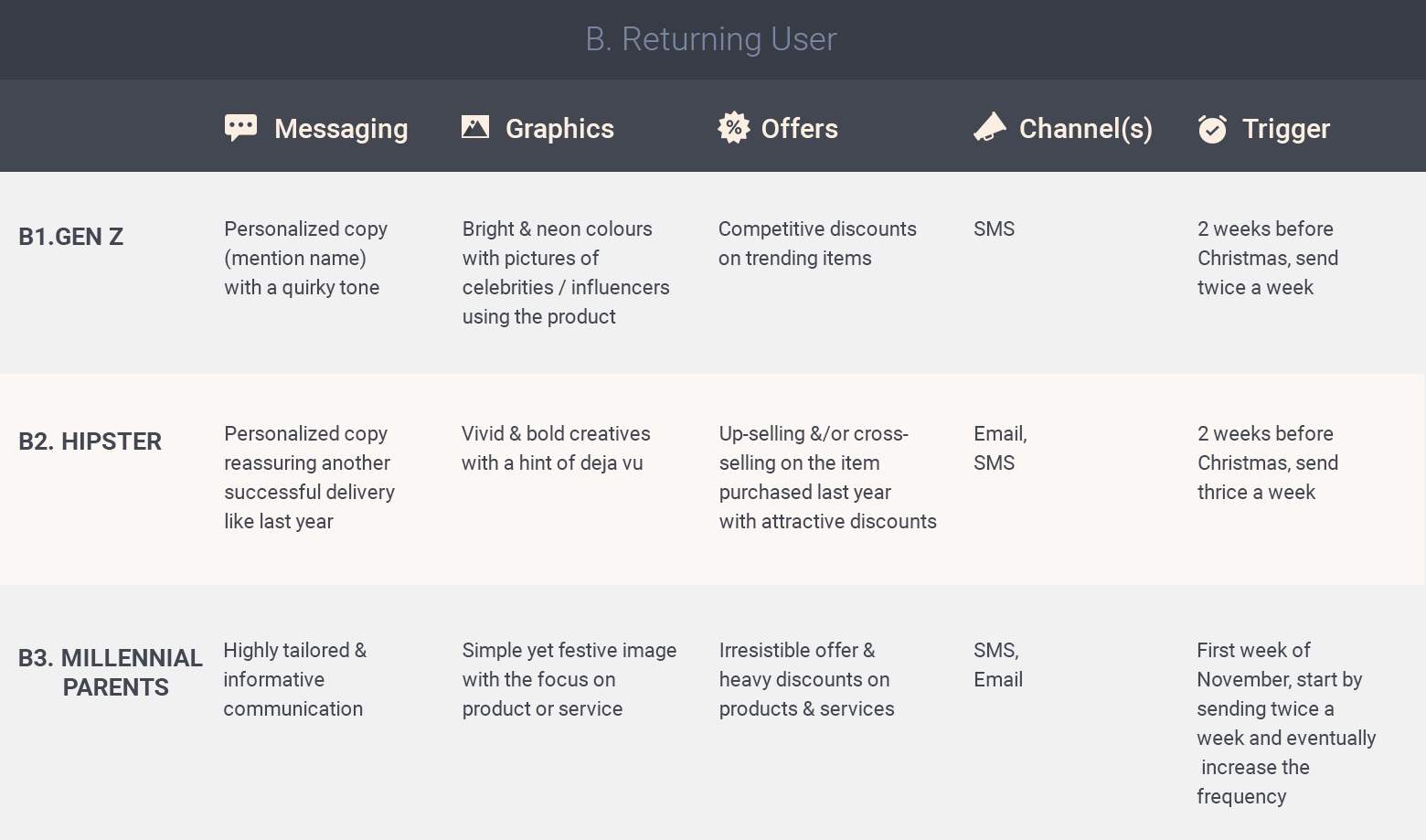
C. Regular users
Benefits of segmentation of your holiday marketing campaigns
Now that you know how to micro segment your Holiday Shoppers, let’s move on to what benefits you can enjoy from the process:
- Engage with a target segment via personalized and relevant messages
- Gain deeper understanding of the preferences, needs and goals of the segment
- Effective allocation of marketing resources
- Potent one-on-one marketing
- Identify new products, services or trends which is gaining popularity in that particular segment
- Increase in customer loyalty & retention
- Determine profit potential of each segment
- Improve customer service and management
What’s next?
Customer Journey Mapping.
It’s the process of mapping and illustrating various stages and touchpoints a customer goes through while engaging with your brand. You can literally design and implement a niche market strategy specific campaign with intricate level of personalisation with the help of journey mapping tools. Here’s an example for you:
Use-case: Post checkout completion, approach Regular Millennial Parents for a review and rating with the help of an NPS Survey in return for 20% cashback on their last billing amount.
Implementation:
Since Millennial Parents are mobile shoppers, we will use In-App Notification (Page Blocker layout) to capture their attention while they are browsing the mobile app. The notification will be kept neat on the christmas and the focus will be on the necessary information like discount value, category, CTA etc.
If the user falling under the segment clicks on the CTA and successfully completes the checkout within the next 2 days of showing the in-app message, an email will be sent to him/her asking for a Review and Rating in return for a cashback reward. This cashback will encourage the user to not only provide the feedback but to also do additional shopping for more cashback.
This is how it will be like:
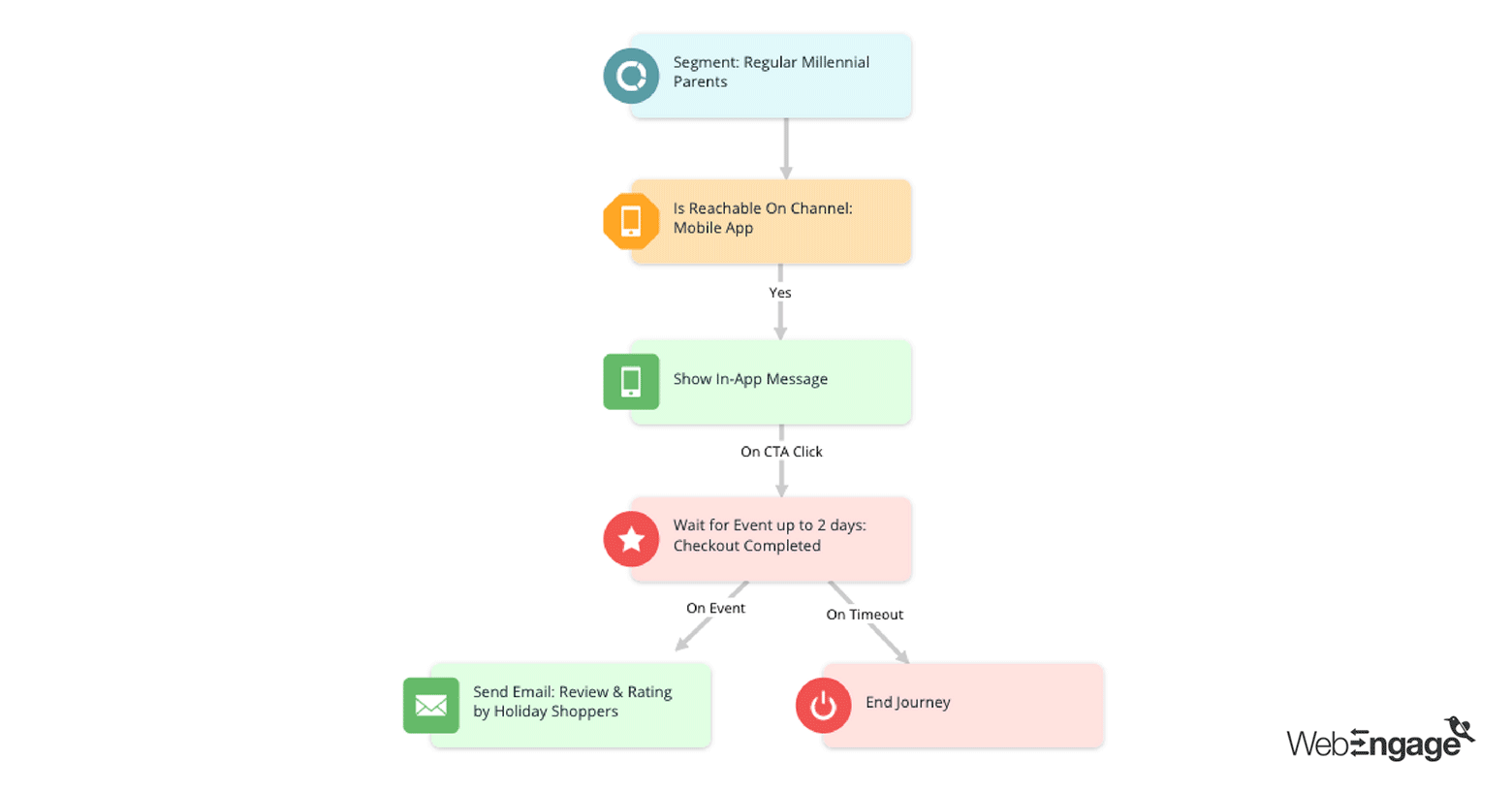
To the rest, Happy Segmenting and Merry Christmas!
Bonus Read: How to use RFM analysis segmentation to improve marketing.






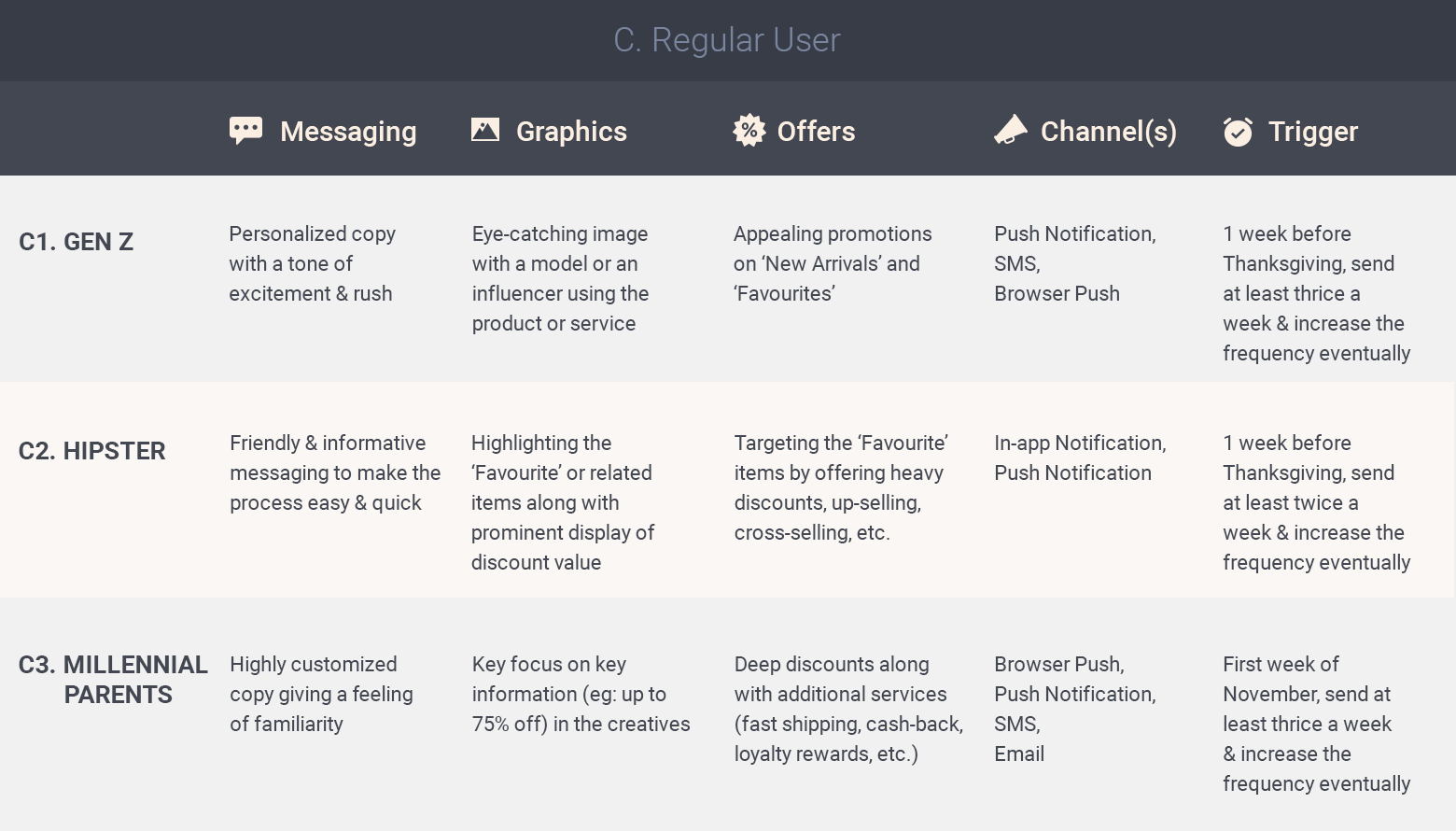

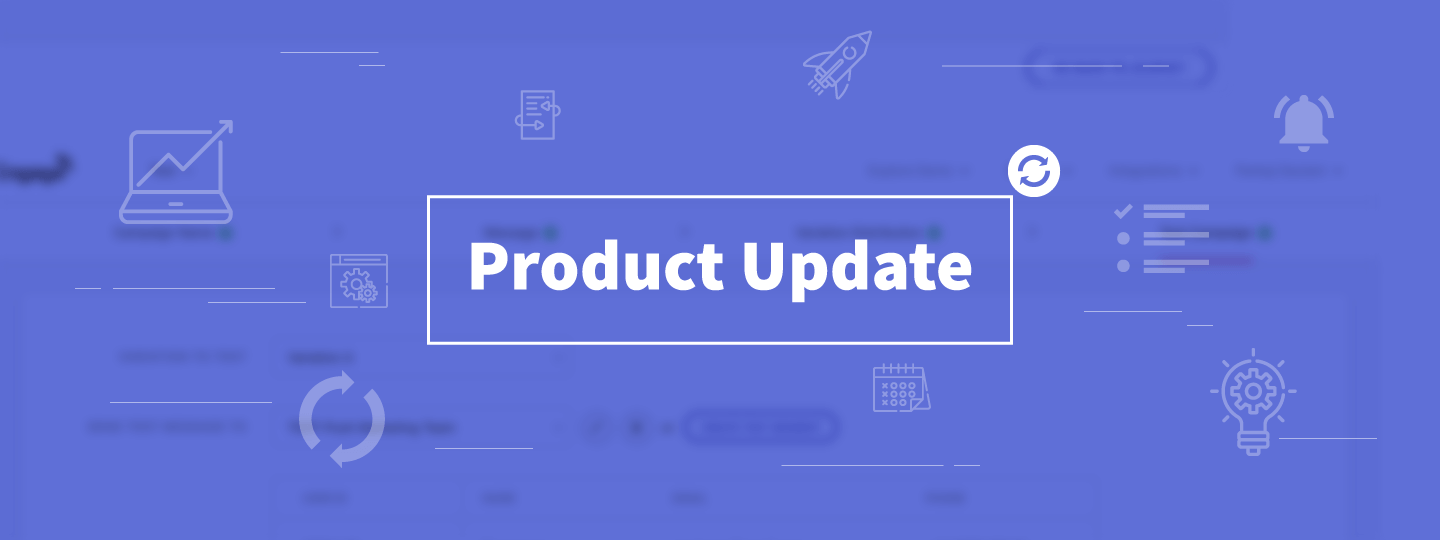
 Harshita Lal
Harshita Lal
 Sanjay Mishra
Sanjay Mishra